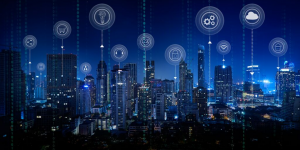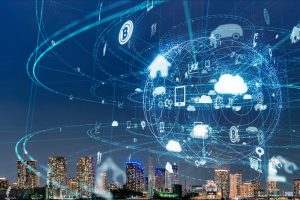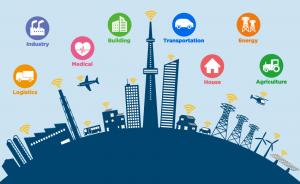
Shownotes
Welcome to Day 1423 of our Wisdom-Trek, and thank you for joining me.
This is Guthrie Chamberlain, Your Guide to Wisdom
Smart Cities – Ask Gramps
Wisdom - the final frontier to true knowledge. Welcome to Wisdom-Trek! Where our mission is to create a legacy of wisdom, to seek out discernment and insights, to boldly grow where few have chosen to grow before. Hello, my friend, I am Guthrie Chamberlain, your captain on our journey to increase Wisdom and Create a Living Legacy. Thank you for joining us today as we explore wisdom on our 2nd millennium of podcasts. Today is Day 1423 of our Trek, and our focus on Fridays is the future technological and societal advances, so we call it Futuristic Fridays. My personality is one that has always been very future-oriented. Since my childhood, I have yearned for the exploration and discovery of new technologies and advancements for the future. I grew up with the original Star Trek series, and even today, while I am on my 64th revolution around the sun, I still dream of traveling in space. Each week we will explore rapidly converging technologies and advancements, which will radically change our lives. At times, the topics may sound like something out of a science fiction novel, but each area that we explore is already well on its way of becoming a reality over the next couple of decades. To keep with our theme of “Ask Gramps,” I will put our weekly topics in the form of a question to get us on track. So this week’s question is: Hey Gramps, what will the cities of the future be like?
Smart Cities
Last week on Futuristic Friday, we explored High-Speed Global Connectivity, which is the delivery method for so many of the technological advances we will investigate. With the global pandemic still impacting the world, and when unrest seems to be nearly everywhere, you must understand that none of these issues will be long-lasting in the grand scheme of the world. Our world is in a disruptive mode, which will speed up the exponential technology that is changing our world today. I am using some of the information mentioned in Peter Diamandis’s blogs and book “The Future is Faster Than You Think.”, as a starting point.
We will do a deeper dive into some technologies, such as transportation separately. This week we will focus on the cities themselves. Each week alone, an estimated 1.3 million people move into cities, driving urbanization on an unstoppable scale. Advancement may slow somewhat due to the pandemic, but not long term.
By 2040, about two-thirds of the world’s population will be concentrated in urban centers. Over the decades ahead, 90 percent of this urban population growth is predicted to flourish across Asia and Africa. As discussed last week, many of these areas are just starting to adopt high-speed global connectivity. Already, 1,000 smart city pilots are under construction or in their final urban planning stages across the globe, driving forward countless visions of the future.
Already, 1,000 smart city pilots are under construction or in their final urban planning stages across the globe, driving forward countless visions of the future.
As data becomes the gold or currency of the 21st century, centralized databases and hyper-connected infrastructures will enable everything from sentient cities that respond to data inputs in real-time, to smart public services that revolutionize modern governance. I currently work for a company that is providing integral pieces of the software that will drive this revolution.
Connecting countless industries such as real estate, energy, sensors and networks, transportation, among others — tomorrow’s cities pose no end of creative possibilities and stand to transform the human experience completely.
Today’s podcast is a little longer since we’ll be taking a high-level tour of today’s cutting-edge urban enterprises involved in these three areas:
- Hyperconnected urban ecosystems that respond to your data
- Smart infrastructure and construction
- Self-charging green cities
Let’s dive in!
Smart Cities that Interact with Your Data
Any discussion of smart cities must also involve today’s most indispensable asset: data. – It is already the gold of today and much more so in the future.
As 5G connection speeds, Internet of Things (IoT-linked devices), and sophisticated city Artificial Intelligence (AIs) give birth to trillion-sensor economies; low latencies will soon allow vehicles to talk to each other and infrastructure systems to self-correct.
Even public transit may soon validate your identity with a mere glance in any direction, using facial recognition to charge you for individualized travel packages and distances.
As explained by Deloitte Public Sector Leader Clare Ma, “real-time information serves as the ‘eye’ for urban administration.”
In most cities today, data is fragmented across corporations, Small to Medium Enterprises, public institutions, nonprofits, and personal databases, with little standardization.
Yet to identify and respond to urban trends, we need a way of aggregating multiple layers of data, spanning traffic flows, human movement, individual transactions, shifts in energy usage, security activity, and almost any significant component of contemporary economies.
Only through real-time analysis of information flows can we leverage exponential technologies to automate public services, streamlined transit, provide smarter security, optimized urban planning, and responsive infrastructure.
Already, cutting-edge cities across the globe are building centralized data platforms to combine different standards and extract actionable insights, from smart parking to waste management.
One example is the city of Nanjing, China…
With sensors installed in 10,000 taxis, 7,000 buses, and over 1 million private vehicles, the city aggregates daily data across both physical and virtual networks. After transmitting it to the Nanjing Information Center, experts can then analyze traffic data, send smartphone updates to commuters, and ultimately create new traffic routes. Replacing the need for capital-intensive road and public transit reconstruction, real-time data from physical transit networks allow governments to maximize the value of preexisting assets, saving time, and increasing productivity across millions of citizens.
Replacing the need for capital-intensive road and public transit reconstruction, real-time data from physical transit networks allow governments to maximize the value of preexisting assets, saving time, and increasing productivity across millions of citizens.
Beyond traffic routing, proliferating sensors and urban IoT are giving rise to real-time monitoring of any infrastructural system.
Another example is Italy’s major rail operator Trenitalia has now installed sensors on all its trains, deriving real-time status updates on each train’s mechanical condition. Now capable of calculating maintenance predictions in advance of system failure, transit disruptions are becoming a thing of the past.
Even in the city of Los Angeles, they have embedded sensors in 4,500 miles worth of new LEDs (replacing previous streetlights). The minute one street bulb malfunctions or runs low, it can be fixed near-immediately, forming part of a proactive city model that detects glitches before they occur.
Another China city, Hangzhou, home to e-commerce giant Alibaba, has now launched a “City Brain” project, aiming to build out one of the most data-responsive cities on the planet. With cameras and other sensors installed across the entire city, a centralized AI hub processes data on everything from road conditions to weather data to vehicular collisions and citizen health emergencies.
Overseeing a population of nearly 8 million residents, Hangzhou’s City Brain manages traffic signals at 128 intersections while coordinating over 1,000 road signals simultaneously. City Brain also tracks ambulances en-route and clears their paths to hospitals without risk of collision, directs traffic police to accidents at record rates, and even assists city officials in expedited decision-making. It is no more wasting time at a red light when there is obviously no cross traffic or pedestrians. Wouldn’t that be nice?
Already, the City Brain has cut ambulance and commuter traveling times by half. As reported by China’s first AI-partnered traffic policeman Zheng Yijiong, “the City Brain can detect accidents within a second,” allowing police to “arrive at any site within 5 minutes” across an urban area of over 3,000 square miles.
Beyond oversight of roads, traffic flows, collisions, and the like, converging sensors and AI are now being used to monitor crowds and analyze human movement. I realize that for some of us in the United States, this makes us a bit uncomfortable, but it will happen, and much good can come from it.
Companies like SenseTime now offer software to police bureaus that can not only identify live faces, individual gaits and car license plates, but even monitor crowd movement and detect unsafe pedestrian concentrations. The pandemic will accelerate this process.
Some researchers have even suggested the use of machine learning to predict population-level disease spread through crowd surveillance data, building actionable analyses from social media data, mass geolocation, and urban sensors. The ‘data-models’ used during this pandemic is a product of this.
Yet aside from self-monitoring cities and urban AI ‘brains,’ what if infrastructure could heal itself on-demand. Forget sensors, connectivity, and AI — enter materials science. Listen to this next segment for some very interesting and exciting projects.
Self-Healing Infrastructure
The U.S. Department of Transportation estimates a $542.6 billion backlog needed for U.S. infrastructure repairs alone.
As I’ve often said, the world’s most expensive problems are the world’s most profitable opportunities. Enter self-healing construction materials. First up, concrete. You may be thinking, there is no such thing, but there is.
To multiply the longevity of bridges, roads, and any number of infrastructural fortifications, engineers at Delft University have developed a prototype of bio-concrete that can repair its own cracks.
Mixed in with calcium lactate, the key ingredients of this novel ‘bio-concrete’ are tiny capsules of limestone-producing bacteria distributed throughout any concrete structure. Only when the concrete cracks, letting in air and moisture, does the bacteria awaken.
Like clockwork, the bacteria begin feeding on surrounding calcium lactate as it produces a natural limestone sealant that can fill cracks in a mere three weeks — long before small crevices can even threaten structural integrity.
As head researcher Henk Jonkers explains, “What makes this limestone-producing bacteria so special is that they can survive in concrete for more than 200 years and come into play when the concrete is damaged. If cracks appear as a result of pressure on the concrete, the concrete will heal these cracks itself.”
Yet other researchers have sought to crack the code (no pun intended) of living concrete. Testing everything from hydrogels that expand 10X or even 100X their original size when in contact with moisture, to fungal spores that grow and precipitate calcium carbonate the minute micro-cracks appear.
But bio-concrete is only the beginning of self-healing technologies.
As futurist architecture firms start printing plastic and carbon-fiber houses, engineers are tackling self-healing plastic that could change the game with economies of scale.
Plastic not only holds promise in real estate on Earth; it will also serve as a handy material in space. NASA engineers have pioneered a self-healing plastic that may prove vital in space missions, preventing habitat and ship ruptures in record speed. As a side note, since I am involved in the oil in gas industry with a client, I have a little different perspective while we shift some of our energy needs away from fossil fuels. What many don’t realize is that the primary raw resource in plastic, as well as many other items we manufacture, is oil.
The implications of self-healing materials are staggering, offering us resilient structures both on earth and in space.
One breakthrough worth noting involves the magic of graphene.
Perhaps among the most significant physics discoveries of the century, graphene is composed of a 2D honeycomb lattice, which is over 200X stronger than steel, yet remains an ultra-thin one atom thick.
While yet to come down in cost, graphene unlocks an unprecedented host of possibilities, from weather-resistant and ultra-strong coatings for existing infrastructure, to multiplied infrastructural lifespans. Some have even suggested graphene’s use in the construction of 30 km tall buildings. And it doesn’t end there.
As biomaterials and novel polymers will soon allow future infrastructure to heal on its own, nano- and micro-materials are ushering in a new era of smart, super-strong, and self-charging buildings.
Revolutionizing structural flexibility, carbon nanotubes are already dramatically increasing the strength-to-weight ratio of skyscrapers. Imagine if we could engineer buildings that could charge themselves… or, better yet, produce energy for entire cities, seamlessly feeding energy to the grid. That takes us to the next areas of focus.
Self-Powering Cities
As exponential technologies across energy and water burst onto the scene, self-charging cities are becoming today’s testing ground for a slew of green infrastructure pilots, promising a future of self-sufficient societies.
In line with new materials, one hot pursuit surrounds the creation and commercializing of solar power-generating windows.
In the past few years, several research teams have pioneered silicon nanoparticles to capture everyday light flowing through our windows. Little solar cells at the edges of windows then harvest this energy for ready use.
Scientists at Michigan State, for instance, have developed novel “solar concentrators.” Capable of being layered over any window, these solar concentrators leverage non-visible wavelengths of light — near-infrared and ultraviolet — pushing them to those solar cells embedded at the edge of each window panel.
Rendered entirely invisible, such solar cells could generate energy on almost any sun-facing screen, from electronic gadgets to glass patio doors to reflective skyscrapers.
Beyond self-charging windows, countless future city pilots have staked ambitious goals for solar panel farms and renewable energy targets. One example is Dubai’s “Strategic Plan 2021,” for instance.
Touting a multi-decade Dubai Clean Energy Strategy, Dubai aims to gradually derive 75 percent of its energy from clean sources by 2050.
With plans to launch the largest single-site solar project on the planet by 2030, boasting a projected capacity of 5,000 megawatts, Dubai further aims to derive 25 percent of its energy needs from solar power in the next decade.
In the city’s “Strategic Plan 2021,” Dubai aims to soon:
- 3D-print 25 percent of its buildings;
- Make 25 percent of transit automated and driverless;
- Install hundreds of artificial “trees,” all leveraging solar power and providing the city with free WiFi, info-mapping screens, and charging ports;
- Integrate passenger drones capable of carrying individuals to public transit systems;
- And drive forward countless designs of everything from underwater bio-desalination plants to smart meters and grids.
A global leader in green technologies and renewable energy, Dubai stands as a gleaming example that any environmental context can give rise to thriving and self-sufficient eco-powerhouses.
Dubai is not alone, and others are quickly following suit.
Leading the pack of China’s 500 smart city pilots, Xiong’an New Area (near Beijing) aims to become a thriving economic zone powered by 100 percent clean electricity. As of the end of 2019, 100 U.S. cities are committed and on their way to the same goal. This may reshape some of the energy industries around the world; those raw resources are used to manufacture most of the new technologies.
The final smart city area we will consider today is:
Cities as Living Organisms
As new materials forge ahead to create flexible and self-healing structures, green infrastructure technologies are exploding into a competitive marketplace.
Aided by plummeting costs, future cities will soon surround us with self-charging buildings, green city ecosystems, and urban residences that generate far more than they consume.
As 5G communications networks, proliferating sensors and centralized AI hubs monitor and analyze every aspect of our urban environments; cities are fast becoming intelligent organisms, capable of seeing and responding to our data in real-time.
While these technologies are exciting and maybe a bit scary for some, something that is more important is realizing, that God is granting us this ability, and He knows both our every action, and our every thought. It is only God who we praise and thank for what He is completing through us. We are told in:
The Lord is watching everywhere, keeping his eye on both the evil and the good.
That is a wrap for today’s question. Join us again next Futuristic Friday for another interesting question on our ‘Ask Gramps’ episode. Our next trek is Meditation Monday, where we will help you reflect on what is most important in life. So encourage your friends and family to join us and then come along on Monday for another day of ‘Wisdom-Trek, Creating a Legacy.’ If you would like to listen to any of the past 1422 daily treks or read the associated journals, they are all available at Wisdom-Trek.com. I encourage you to subscribe to Wisdom-Trek on your favorite podcast player so that each day will be downloaded to you automatically.
If you would like to listen to any of the past 1422 daily treks or read the associated journals, they are all available at Wisdom-Trek.com. I encourage you to subscribe to Wisdom-Trek on your favorite podcast player so that each day will be downloaded to you automatically.
Thank you for allowing me to be your guide, mentor, and, most of all, your friend as I serve you in through this Wisdom-Trek podcast and journal.
As we take this Trek of life together, let us always:
- Live Abundantly (Fully)
- Love Unconditionally
- Listen Intentionally
- Learn Continuously
- Lend to others Generously
- Lead with Integrity
- Leave a Living Legacy Each...